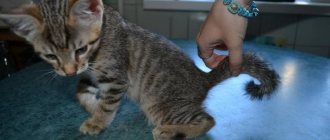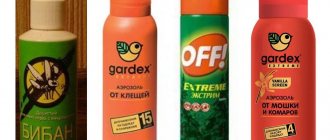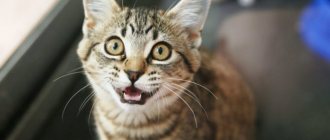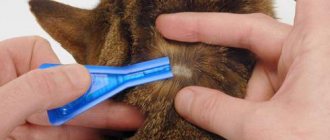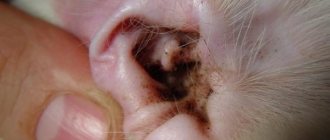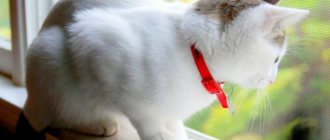Many of us love to have pets. A fluffy ball purring touchingly near a baby’s crib is very cute, you might think. Indeed, this is true, but only if the animal is completely healthy. We must pay special attention to this point, bring the pet in time for vaccinations, feed it healthy food, and also regularly carry out preventive procedures to prevent infection with various parasites (worms, fleas). At the same time, it is not always necessary to use expensive pharmaceutical drugs, which also have a number of contraindications. Today we will talk about folk remedies for fleas in cats. Indeed, since nature gives us a ready-made solution to the problem, why refuse it.
If the animal is domestic
Why use pharmaceutical or folk remedies for fleas on cats if the animal does not leave the apartment. Even in this case, it is impossible to give a 100% guarantee that he will never get insects. They can come from neighbors, or the fluffy beauty can easily become infected while walking in the yard. Therefore, in any case, you need to regularly examine your pet. At the slightest sign, which we will talk about now, you need to start using folk remedies for fleas in cats. This is not dangerous for the pet, unlike fleas, which most often carry unpleasant diseases.
How to get rid of fleas using kerosene?
Kerosene is made from petroleum and is a toxic, flammable substance. Fleas cannot tolerate the smell of kerosene; it is harmful to them. To exterminate these pests, household kerosene is used, which in the past was used for lighting fixtures. This toxic compound can kill not only fleas, but also lice, bedbugs and other parasites.
There are several ways to prepare solutions for treating premises with this product:
- For processing you will need kerosene - 100 g, naphthalene - 5 g (1 tablet), creosol - 50 ml. All components must be mixed in a container, after which the resulting solution should be used to treat baseboards and cracks in the floor, i.e. all possible insect habitats in the apartment. If necessary, repeat the procedure.
- Turpentine diluted with water is also effective against fleas. You need to add 100-200 ml of kerosene to a bucket of water. This solution should be used to wipe floors, cabinet furniture, etc. Particular attention should be paid to hard-to-reach places in the apartment - where the insect can hide. It is recommended to repeat the treatment once every 2 weeks. The resulting liquid can be poured into a spray bottle and sprayed with it all possible places where fleas have been noticed.
- Dilute in a container: 12 parts turpentine, 6 parts kerosene, 3 parts denatured alcohol and 1 part naphthalene. Wipe the surfaces and floors of the house with the prepared mixture.
- A fairly effective and affordable flea recipe that is easy to prepare. In this case, it is also necessary to dilute turpentine with kerosene and water. To do this you will need 15 ml of turpentine, 15 ml of kerosene and 150 ml of hot water. Rub 40 g of laundry soap into the mixture and mix everything well. Treatment with the resulting substance is carried out in all possible areas in the apartment where parasites may be located.
- This method will help destroy not only fleas, but also house bugs. Add 4 parts of green soap (this is a contact insecticide), 2 parts of kerosene, 1 part of turpentine and 12 parts of ordinary water at room temperature to the container. Wipe the apartment with the solution; this cleaning must be repeated until the pests disappear. And after 1 month it is advisable to repeat the procedure in the apartment.
To achieve the best effect, it is advisable to carry out repeated procedures regardless of which method of preparing the mixture was chosen, since some individuals may remain in the apartment and continue to reproduce, which will lead to a constant struggle that does not bring results.
Remember: when cleaning, you should always follow safety precautions.
What to look for
First of all, this is the behavior of your pet. As soon as she gets fleas and starts biting her painfully, it will immediately become noticeable. The cat begins to itch and bite itself, and often jumps up while sleeping. If this behavior is present, then it’s time to proceed to inspection. When you part the fur, you will probably see scratched skin, and possibly small ulcers if the disease did not begin to progress today. On a light, not too thick coat, it is easy to find the insects themselves. They are elongated, shiny creatures that are difficult to catch and crush due to their chitinous coating.
Insects especially often gather along the ridge on the back. Where they not only feed, but also lay eggs. My second favorite place is the neck. By regularly inspecting these areas, you can be sure that not a single flea will pass by you.
First reaction
Of course, you need to save your pet. If you have ever been bitten by a blood-sucking insect (fly, horsefly), then you know how unpleasant it is. The cat experiences similar sensations all day long, which prevents them from sleeping peacefully. The animal becomes nervous and irritable, which is not surprising. Therefore, the first thing that comes to the owner’s mind is to run to the pharmacy for special medications. But their use is not always possible. If the cat is pregnant or too young, you will have to look for another option. In addition, there may simply be nowhere to buy insecticide. It is in such cases that folk remedies for fleas in cats will come to the rescue. They do not act as aggressively as pharmaceutical products, but in most cases they cope with their task no worse.
spring-cleaning
When talking about how to get rid of fleas from a cat using folk remedies, you need to immediately think about the room in which she lives. Parasites can be found not only on animals. They quite normally live for several days in wooden floor cracks, in bedding, and carpets. Therefore, in parallel with treating your pet, you need to disinfect the room. To do this, for a week you need to carefully vacuum carpets, upholstered furniture, rugs, that is, all possible places where fleas can remain and live long enough without an owner.
In addition, it is very useful to stock up on a spray bottle. With its help we will spray the rooms. Of all the available and natural remedies that nature generously shares with us, the most effective are solutions of essential oils of lavender, calamus and eucalyptus, as well as other aromatic plants. They do not have an unpleasant aroma, but are excellent at repelling fleas. Every day while performing preventive measures, spray them around the house. This can get on the floor, walls, carpets, and upholstered furniture. Place fresh wormwood around the area where the cat sleeps. All insects will try to immediately leave the room.
Folk remedies for fleas in cats
There are many ways to get rid of fleas on a cat using folk remedies. They are used if the animal is pregnant, there are small kittens in the house, or if there is intolerance to medications or allergic reactions. Folk remedies are characterized by low toxicity and cause minimal harm to animals. To get the maximum effect, you need to treat not only the cat, but also the bedding, carpets, houses, and toys. Including other animals in the house, even if they do not have parasites.
Regular brushing
Combing your pet if there are insects in its fur should be done daily. To do this, take a special furminator or a comb with small teeth. Before the procedure, the animal is treated with anti-flea agents. This will help remove weakened insects and their larvae.
First, the cat is combed against the grain, capturing the undercoat. Then the procedure is repeated in the direction of hair growth. It is also important to capture the undercoat, where parasites mainly hide. You can complete the procedure with the first stage of combing. The combed wool with insects and larvae is put into a separate bag, then burned or poured with boiling water or kerosene.
Sagebrush
Parasites do not like the smell of wormwood and begin to leave the treated pet and its surrounding objects. To prepare the solution, take 40 g of fresh crushed plant shoots and pour 0.5 liters of boiling water. Keep on high heat for 15 minutes, then close the container tightly with a lid. Leave for 6 hours, filter.
Soak the cat's fur in the solution and wrap it in a dry towel for 30 minutes. Then they take it to the bath, remove the fabric, and wash it with warm running water. Dry the wool with a new, clean towel. The course of treatment is once a day for a week.
Garlic
Garlic contains substances that repel blood-sucking insects. To prepare the solution, take 7 large crushed cloves and pour 0.5 liters of boiling water. Cover the container with a lid and leave for 12 hours in a warm, dark place. Then they filter and throw away the cake. Treat the pet by applying 6 drops of liquid from the withers to the middle of the back. It must get on the skin, so the fur is parted and the drops are rubbed in.
How to tell if a cat has fleas
Opisthorchiasis
Is it possible to give deworming medication to a pregnant cat?
All other areas for application are excluded so that the cat cannot reach and lick them. If this happens, then garlic water can cause serious disruption to the gastrointestinal tract and poisoning. Treatment is carried out 2-3 times a day, in a course of 5 days. After the insects disappear, you can bathe your pet with soap to get rid of the unpleasant odor.
Pine sawdust
Pine sawdust is more helpful as a preventive remedy, but it can also be used for treatment. Pine needles have a specific smell that repels fleas. For treatment and prevention, they sew a new mattress for the bed, filling it with pine sawdust. To prevent them from disturbing the pet, they are covered with padding polyester from above and below.
Such a coniferous mattress will repel insects (including when the pet is resting) and prevent the laying of flea eggs. If the animal prefers several places for a bed (on a closet, on a windowsill, in a house), then mattresses with pine sawdust should be placed everywhere. The filler is changed as soon as the smell of pine needles disappears.
Saline solution
Saline solution is a safe, effective method of how to rid kittens of fleas using folk remedies. To treat your pet, a solution of warm water and salt is poured into a basin at the rate of 1 l/100 g. There should be enough of it so that the kitten is completely covered with water. Only the head remains above the surface. The animal is kept in the solution for 10 minutes. Then wash under warm water with baby soap and dry the wool.
Essential oils
Essential oils have a pungent odor that is unpleasant for insects and repels them. Volatile substances do not kill insects. But they are forced to leave their habitat. The oils will work as long as the aroma lasts. Therefore, you need to treat the room 2-3 times a day. Products should not be applied to the pet’s fur, as they can cause severe intoxication, loss of smell, and disturbances in the nervous system. The following oils are used to control fleas:
- wormwood;
- carnations;
- eucalyptus;
- anise;
- pine trees;
- oregano;
- rosemary;
- lavender;
- cedar;
- geraniums;
- peppermint.
For processing, concentrated oils are diluted in water, alcohol solution (at the rate of 50 ml/5 ml/5 drops). Then they spray the curtains, the pet’s house, carpets, the area around the tray, and bedding. For cleaning floors, prepare a separate solution (5 liters of water/25 drops of oil). First, the concentrate is diluted in a small bottle and shaken for 1-2 minutes. The oil should break into small particles. Then add water to the bucket and mix with it.
It is not recommended to use tea tree oil for treatment. It causes weakness, nausea, and vomiting in the cat. Dizziness and loss of coordination may occur.
Orange and lemon scents
Fleas cannot tolerate citrus scents. Oranges and lemons are most often used to get rid of insects. Take one of the fruits, finely chop it with the peel, pour in 0.5 liters of boiling water. Leave for 24 hours in a dark place. Strain, pour the product into a bottle with a spray bottle, and spray the animal.
You can dry citrus peels, grind them into powder and, if necessary, make a solution from it for processing. You can replace oranges with citric acid. It is dissolved in water, then sprayed on the pet (excluding the head).
Vinegar and alcohol
Vinegar helps kill fleas the first time. To prepare the solution, take cologne with a strong floral aroma, ammonia, and 9% table vinegar in equal proportions. The ingredients are mixed, then the pet is sprayed with a spray bottle. You need to make sure that the product does not get on the face, especially in the eyes and nose.
Wrap the cat in plastic wrap, excluding the head. Keep in this position for 10 minutes. Then the animal is released and bathed with flea shampoo. Dry with a towel or hairdryer. Then the weakened, dead parasites and their larvae are combed out.
Tar soap
To kill fleas, you can use solid or liquid tar soap. In the second case, it is more convenient to use. If only a bar is available, then soak it in warm water until a thick soap mass is obtained. Tar soap can be used to treat not only adult pets, but also kittens, starting from 5 weeks. Algorithm of actions on how to rid a cat of fleas using folk remedies:
- The animal is transferred to a large basin or bathtub. Carefully moisten the wool with warm water so that it is completely saturated and the skin is wet.
- Lather with soap without touching the head. Particular attention should be paid to the withers, belly and folds at the paws.
- Wrap the cat in a dry towel. Hold in your arms for 10-15 minutes, but no longer than 40.
- They take the pet to the bath. It is necessary to remove the towel there, as fleas will begin to jump out of the fabric and wool.
- Rinse off the soap thoroughly with warm water.
- Dry the animal with a clean, dry towel.
- Comb out the remains of fleas and their eggs.
If the insects have not disappeared after the first treatment, then repeat treatment is carried out after 4 days.
Ammonia
Fleas cannot tolerate the smell of ammonia. To treat the animal, prepare a solution of 1 liter of water with the addition of 10 drops of alcohol. The product is sprayed on the pet and the premises. Usually one time is enough, but if the insects have not disappeared, the procedure is repeated daily for a week.
Geranium decoction
The effect of geranium on fleas is similar to wormwood. Fleas are repelled by the strong smell. For processing, crushed leaves and stems of the plant are taken. Boil them for 20 minutes over low heat, cool, and filter. The product is generously soaked into the wool, right down to the skin. Wrap the animal in a warm cloth for 20 minutes. Then wash off the solution with warm water, dry with a hairdryer or clean towel, and comb out.
Hydrogen peroxide
For treatment, mix hydrogen peroxide with water (1:3). The liquid is soaked through the wool to the skin. Leave for 15 minutes, rinse with shampoo or clean water with the addition of vinegar. However, peroxide degrades the quality of the coat, so the method is not suitable for cats that are being prepared for exhibitions.
Boric acid
Boric acid quickly dissolves the chitinous shell of fleas. If a liquid ready-made water-based product is used, then it is mixed with water in equal proportions. Then soak the wool and keep it for 15 minutes. If powder is used, it is immediately poured into the wool. Keep for 15 minutes. After both methods, the cat needs to be washed with anti-flea shampoo, the hair dried, and combed. During processing, it is important to ensure that the liquid does not get on the mucous membranes, eyes, nose, or mouth.
Kerosene
Kerosene is a highly toxic product. It is used for processing only in combination with soap. The method is not suitable for kittens, pregnant, weakened, sick animals. Shampoo is made from kerosene by mixing 100 ml of liquid with 200 g of laundry soap shavings. The mixture is designed for 10 liters of hot water. Use as soon as the soap dissolves. You need to wash your pet with the product, but make sure that the shampoo does not get into the eyes, ears, or face. Then thoroughly wash off the soapy kerosene with running water.
Hellebore water
Hellebore tincture with alcohol is an effective remedy for fleas. The solution is sold in pharmacies ready-made. Soak a cotton swab in the product and soak the animal’s fur down to the skin with the liquid. Apply only to places inaccessible for licking, excluding areas with scratches and wounds. The solution is kept for 10 minutes. It is toxic, so then wash it off thoroughly with shampoo and warm running water.
First aid
So, we vacuumed the whole house well, sprayed it with disinfectant solutions, now we need to talk about how to rid a cat of fleas using folk remedies. If you have a lot of free time, you can arm yourself with a fine-toothed comb and simply comb out all the parasites. This will only give temporary relief, because within a few days new hungry insects will hatch from the eggs. Nits are attached to the fur so firmly that neither bathing nor combing will help against them. Provided that your pet does not roam freely on the street, you can completely rid it of fleas by methodically combing the animal at intervals of several days. It's easy, cheap and effective. However, there are reviews from owners who say that if there is a strong infestation of blood-sucking insects, even daily bathing and combing do not produce results.
Homemade flea shampoo
Recipe 1. Pour a third of a finely grated piece of baby soap into half a liter of water and cook until it becomes a jelly. Add a finely chopped onion, one yolk and a tablespoon of nettle decoction to the cooled mixture. After applying to the cat's fur, leave the homemade shampoo for at least 15 minutes, and then bathe the animal in clean water.
Flea drops for cats: remedy, tablets
Recipe 2. Half a piece of laundry soap, grated, is poured with a decoction of geranium, wormwood and lavender and boiled in a water bath until thickened. Then add two yolks and a couple of drops of essential oil suitable for these purposes into the thick, cooled mixture.
Important! It is recommended to use this shampoo immediately after preparation; during storage, the healing properties weaken.
Essential oils
And again we remember about these amazing liquids, which have a number of useful properties. While their smell does not disturb humans and animals, they are very disliked by blood-sucking insects. It is this property that the effect is designed for. When choosing the safest folk remedies for removing fleas from cats, it is worth highlighting a mixture of cedar and lavender essential oils. A standard spray bottle (600 ml) will require literally 2-3 drops of one and the other. Shake well and the solution is ready. The cat needs to be treated thoroughly, once or twice a day. This method cannot be called fast, but within 2-3 weeks you can completely remove annoying insects.
Healing plants
The most effective folk remedies for fighting cat fleas are fragrant herbs, or rather their decoctions and infusions. Decoctions are prepared from fresh or dried herbs, which are boiled in water in a certain ratio. The infusion is also prepared from herbs, but they are poured with boiling water and infused for some time.
Based on geranium and lavender
An infusion of geranium and lavender is prepared as follows. 40 grams of dry herb are poured with one liter of boiling water and infused for 20-30 minutes. The cooled infusion is filtered and used to treat the skin and fur of a cat infected with fleas. The treatment is repeated 3-4 times until the fleas completely disappear from the animal’s fur.
The same infusion can be prepared from tansy, eucalyptus and lavender, the proportions are the same as in the recipe above. In addition to the animal itself, its sleeping and resting areas are treated with the infusion.
Based on wormwood
An ancient folk remedy for removing fleas from cats is wormwood herb. This fragrant plant has a deadly effect on cat parasites. To prepare a homemade remedy, you need to pour 20 g of dry herbs or 40 g of fresh wormwood leaves into 0.5 liters of boiling water, bring to a boil and let it brew for half an hour. Strain the mixture and treat the animal’s fur with the warm infusion. The cat should be treated not in a living room, as the fleas will panic and leave their owner.
INTERESTING TO KNOW: How to find out the age of a cat or kitten
You can use more than just wormwood herb, but in a mixture with lavender, tansy and eucalyptus. Take an equal amount of each herb (10-15 g each), and pour the mixture with 1 liter of boiling water. It is infused for 20-30 minutes, then the fur of an animal infected with fleas is treated.
After treating the cat, you can wrap it in cloth so that the fleas do not jump out onto the floor. After 30 minutes, remove the cloth and wash the animal in a basin of warm water using zoo shampoo.
Decoctions and infusions of wormwood and celandine are effective. You can use the green parts of a fresh plant or pharmaceutical herb. The product can be used to treat kittens older than 3 weeks. The grass is safe to lick, although it tastes very bitter and cats do not try to do so.
Needles
In addition to directly treating the animal, you can use pine bedding against fleas. Fresh pine needles have a repellent effect on insects and force them to leave the cat.
Express method
If the infection is very strong, the surface of the body is scratched and covered with sores, then it is necessary to prepare a stronger decoction. To do this, take a little tansy and wormwood, add eucalyptus and pour boiling water. After an hour, the liquid can be strained. The treatment method is quite simple. Rub a small amount into the animal's skin daily, over the entire surface of the body. Since you can get rid of fleas from a cat using folk remedies yourself, it is not necessary to contact a veterinarian. For severe scratching, you can add a little mint oil to make the tingling less pronounced.
Special soap
Tar soap for fleas in cats is another effective folk remedy. It is dark, with a strong, pungent unpleasant odor. It contains birch tar, which has a bactericidal, insecticidal and anti-inflammatory effect. It has a detrimental effect on ectoparasites, prevents the development of fungal and staphylococcal infections, increases blood circulation in the skin, and relieves inflammation from flea bites.
The soap is completely safe to use, except in cases of individual intolerance to the ingredients included in its composition. Therefore, it can be used in the treatment of sick, weakened animals and kittens more than 5 weeks old.
It should be used like regular bar soap. First you need to wet your pet's fur well, then lather it with soap. Do not rinse off the foam for 3-5 minutes, then thoroughly rinse the animal’s fur and rinse in clean warm water.
INTERESTING TO KNOW: How to get rid of the smell of cat urine on the sofa
Instead of tar soap, you can use gray laundry soap, but it is less effective against fleas.
Animal litter
This is a place where your pet spends a lot of time. Therefore, getting rid of fleas in cats using folk remedies requires mandatory disinfection of the sleeping area. If it's winter outside, it's better to throw the litter outside for a few days. The frost does its job well and any insects or eggs left on it will die. You can replace the bed by slightly modernizing it. Fleas really don't like the smell of pine needles. Therefore, it is very useful to fill the bedding with pine sawdust. The second plant that has the most powerful effect against parasites is wormwood. Place a few branches inside and also near the sleeping area. Usually cats don't mind.
Bathing your pet
Folk remedies for treating fleas in cats can be quite radical. If the infestation is severe and you do not want to wait a long time for the herbs and oils to take effect, then use the following recipe. Take one part each of camphor alcohol, 3% vinegar and any cologne. This mixture should be applied to the surface of the cat's body, and then put a plastic bag on it. There is no need to tie it, just hold it in the neck area for about 5 minutes. Don't forget that your head should always be outside. After this, you need to comb the wool well over a basin filled with water.
Instructions for making a flea collar
After treating your cat using any of the above methods, you must put an anti-flea collar on him. Such a product can be purchased in the pet supply department or made independently.
What does the collar look like?
The purchased product should be selected based on the parameters of the animal, pay attention to whether it smells or not. A homemade collar is made from natural materials and ingredients that can be purchased at any pharmacy.
- Prepare a strip of dense natural fabric, the length is calculated based on the circumference of the cat’s neck. The distance between the collar and the animal’s neck is one to two fingers.
- Soak the fabric blank in a solution of a tablespoon of witch hazel extract and two drops of rosemary or lavender essential oil.
- Dry the soaked strip for two days.
The mixture remaining after soaking is poured into a jar and stored in the refrigerator until the next time, since the product expires within a month. Such a collar can also be made for a dog.
Important! If you notice that after putting on a purchased or home-made collar, your cat is restless, behaves inappropriately, sneezes or has watery eyes, you should immediately remove the product.
Garlic protects not only from vampires
Indeed, blood-sucking insects cannot stand its smell. It is known that lice do not affect people who eat it. Essential oils enter the bloodstream, preventing the parasite from feeding on it. It is unlikely that you will be able to persuade a cat to eat garlic, but it can be used as a deterrent. To do this, crush a few cloves into porridge, add half a glass of water and let it brew for 10 hours. After this, the tincture can be rubbed into the animal’s skin. These are not all folk remedies for fleas in cats, but they are quite enough to ensure a normal existence for your pet.
Traditional methods of treatment
Folk remedies should be used only after prior consultation with a veterinarian. It must be remembered that such treatment methods may not always be effective, especially in the presence of a significant number of parasites. In order to achieve a positive result, it is recommended to use several methods at once.
Cats may be allergic to some folk remedies. It is important to monitor skin reactions during the procedure. If alarming symptoms occur (redness, itching, rashes, vomiting and diarrhea), you should abandon the chosen method and consult a doctor.
Mechanical method
This method is effective only when used in conjunction with anti-blade treatment. If you do not additionally use any anti-parasite remedies, this procedure will not bring any results. Therefore, before you start combing, it is recommended to treat your pet’s fur with any anti-blade shampoo or tar soap. The procedure should be repeated several times a day.
Algorithm of actions:
- Wear gloves. This is a prerequisite, otherwise you can get some kind of infection from fleas.
- Take a fine-tooth comb and comb the cat's fur against the direction of hair growth.
- Gently comb out the parasites, using your fingers to select the larvae, which most often attach closer to the skin. All fleas should be thrown into a jar of boiling water.
- After combing against the grain, you need to do the same only in the opposite direction (according to growth).
A total of up to 5 procedures may be required. It all depends on the method of removing parasites. Even if fleas are completely eliminated, it is necessary to comb out again after 7 days.
Combing fleas from a cat should be done with a special comb.
The mechanical method is not suitable for everyone. Your pet may not like this method because it takes quite a lot of time. This is especially true for active animals accustomed to constant play.
Tar soap
Tar soap is not only a safe, but also a useful way to get rid of fleas and has an antiseptic and wound-healing effect. To eliminate parasites, it is most convenient to use a liquid product. Of course, the animal may not like soap, since it has a pungent odor, but this method in most cases does not cause adverse reactions.
Tar soap has an antiseptic and anti-inflammatory effect
How to use the product:
- Fill the bathroom with hot water. It should be remembered that a comfortable temperature for a cat is 39–40 degrees.
- Rinse the animal's fur and apply tar soap, evenly distributing it over the entire surface of the body.
- Wait a few minutes and rinse off the foam thoroughly.
- Wrap your pet in a towel. When the fur is dry, comb out the fleas.
Attention! Under no circumstances should soap get into your pet's eyes or mouth. The muzzle area must be treated very carefully.
A friend has a cat who at one time was periodically itching. At first she didn’t attach much importance to it, but then she noticed that the pet had fleas. I decided not to use chemicals and bought tar soap. Its smell, of course, is not for everyone, but it is a very effective remedy. After washing the cat 3 times using this soap, a friend noticed that all the parasites had disappeared. In addition, the cat’s fur became fluffy and soft. This soap can eliminate pathogenic microflora and is especially effective against fungi.
Medicinal herbs
To eliminate this problem, you can use the following herbs:
- Sagebrush. Medicinal raw materials do not have a toxic effect on the body and do not cause allergic reactions. To process one animal, you will need 20 g of raw material, which needs to be filled with 500 ml of water and put on fire. Cook for 10 minutes, then let sit for another hour. Then filter and add 1 drop of lavender essential oil. After this, rinse the pet’s fur with the resulting liquid and wrap it in a towel. Allow the animal to dry and comb it. The procedure must be repeated 2-3 days in a row.
- Tansy. Dry raw materials in the amount of 20 g should be poured with 600 ml of boiling water and allowed to brew for about 2 hours. Then filter, heat slightly (up to 40 degrees) and rinse your pet’s fur. Repeat the procedure 2-3 days in a row. When using this method, it is important to comb out the parasites.
- Celandine. This remedy can provoke an allergic reaction, so using it too often is not recommended. First of all, you need to prepare an infusion. For this, 1 tsp. dry herbs should be poured with 300 ml of boiling water and left for an hour. Then strain the liquid and, moistening a cotton pad in it, treat the pet’s fur. You need to do this for several days in a row. It is important to ensure that the cat does not lick the infusion from the surface of the fur, so it is recommended to use a special collar. After the pet has dried, it is necessary to comb it out.
- Geranium and lavender. The herbs need to be mixed in equal proportions and take 60 g of raw material, which should be poured into 1 liter of water and cooked for a quarter of an hour. Then cool to 40 degrees and filter. Use to rinse the animal for 2-3 days in a row. After the wool has dried, comb it out, as in other cases.
If, when using raw materials, the pet’s itching increases, the cat becomes lethargic and the appetite worsens, then this is considered a manifestation of intolerance to the plant component. In this case, it is recommended to abandon the use of herbs and use another method.
What herbs will help get rid of parasites - photo gallery
Wormwood does not cause allergic reactions
Celandine should be used with caution
Geranium has a pungent odor
Lavender eliminates tissue swelling
Tansy effectively eliminates fleas
Garlic and rules for its use
Garlic is considered one of the most effective remedies that can get rid of the problem in 1-2 times. The only thing that needs to be taken into account is the possible occurrence of allergic reactions in the pet. They appear infrequently, but can cause burning and skin rashes.
Garlic is the most effective flea remedy
Algorithm of actions:
- Peel 6 cloves of garlic and grate them.
- Pour 1 liter of warm (not hot!) water.
- Let it brew for 10 hours, then strain and add 1 tsp. brewer's yeast.
- Mix the liquid thoroughly.
- Dip a cotton pad in the product and rub the resulting medicine into the pet’s fur.
- After a day, bathe the animal with shampoo.
Brewer's yeast can be purchased at the pharmacy
When using garlic and brewer's yeast, it is important to ensure that the resulting liquid does not enter the pet's gastrointestinal tract. To do this, it is strongly recommended to use a collar, otherwise the cat may experience serious complications.
Essential oils
Essential oils can be used for treatment:
- Rosemary. It is most convenient to use this oil for bathing the animal. To do this, you need to fill a basin with warm water and add 2 drops of rosemary ether. Mix everything thoroughly and can be used to bathe your pet. This method is recommended to be combined with the use of tar soap. In some cases, one procedure will be sufficient.
- Geranium and lavender. Pour 2 cups of boiled warm water into a container with a spray bottle and add the indicated essential oils, 1 drop at a time. Shake the contents thoroughly and use to spray your pet's fur 2 times a day. On the second day, comb out.
- Lemon and mint. These essential oils are recommended to be added to cat bathing shampoo. Two drops are enough to achieve results. You should bathe your animal very carefully. It is necessary to ensure that shampoo with oils does not get on the face. After the wool is dry, comb it out.
Attention! Essential oils can only be used in the quantities indicated. In no case should you exceed the dosage, otherwise a severe allergic reaction may occur.
What essential oils can be used - photo gallery
Rosemary essential oil helps relieve inflammation
Geranium essential oil promotes tissue regeneration
Lavender essential oil is effective in the fight against blood-sucking parasites
Peppermint essential oil produces an antiseptic effect
Lemon essential oil repels fleas
Use of salt
Regular table salt can help fight blood-sucking parasites. This remedy is effective and safe and can be used even in weakened animals. You only need to use the product once. It is best to purchase fine salt for these purposes, since it is the easiest way to prepare a solution.
Table salt is a safe method to help eliminate fleas
Algorithm of actions:
- Take 10 liters of warm water into a basin and add 3 tbsp. l. salt. Mix everything thoroughly until all the grains are dissolved.
- Place the cat in the basin, soap it with tar soap and wait a couple of minutes.
- Then rinse off the soap with saline solution.
- Dry the wool thoroughly, then comb it out.
If a cat has severe scratching on its body, the saline solution can cause tingling. Therefore, if your pet has wounds on the skin, it is best to refrain from such a procedure.
Pine sawdust
Pine sawdust has a specific odor that fleas cannot tolerate, so this product is used as an auxiliary treatment method. The raw materials are placed under the pet’s bedding or sewn into it, and also placed in the corners of the living room so that the parasites leave the area faster. It should be understood that pine sawdust is not able to rid an animal of a large number of fleas, so this method is recommended to be combined with those presented above.
Pine sawdust can repel fleas
This method is environmentally friendly and safe for both the cat and the residents of the house. Pine sawdust has a pleasant and light pine aroma, which does not cause discomfort to pets and people, but repels various insects.
Hellebore water
This product is one of the most effective, but at the same time not entirely safe for your pet. If hellebore water gets into the gastrointestinal tract, severe poisoning with subsequent death is possible, so the liquid must be used with extreme caution.
Hellebore water is effective against lice, fleas and lice-eaters
Sequencing:
- Wear gloves and place the animal in the bathtub or on the floor.
- Dip a cotton pad in hellebore water and treat the entire coat with the liquid, except the muzzle and anus.
- Wrap your pet in a towel and wait 15 minutes.
- Then rinse thoroughly with shampoo.
- Repeat the procedure in a week.
Attention! Under no circumstances should hellebore water be applied without wearing gloves, as this product is toxic.
Vinegar to the rescue
Vinegar has been used for decades to combat lice and fleas. To enhance the effect, it is also recommended to use ammonia. Cats really don't like this smell, but the results are worth a try. You need to add 2 tsp to 200 ml of vinegar. ammonia.
Regular table vinegar is suitable for this procedure.
Spray the resulting mixture over the surface of the wool using a spray bottle. Then wrap the animal in an old towel or plastic, leaving the muzzle outside. After 10 minutes, rinse thoroughly with shampoo. Then dry the wool with a hairdryer. As a rule, one procedure is enough.
Ammonia is harmful to parasites
To treat cat hair, you should not use vinegar essence, which is very concentrated and can cause irritation. A regular table version of 6 or 9% is suitable.
Lemon infusion
To get rid of the problem, you can use lemon infusion. To do this, you need to wash 1 citrus fruit and cut it, along with the peel, into small pieces. Then pour 600 ml of hot water and leave for 12 hours. Then filter the liquid and pour it into a spray bottle. Apply to spray wool 1-2 days in a row. After the animal has dried, it needs to be combed thoroughly. If necessary, you can repeat the procedure.
Lemons have an unpleasant aroma for fleas
After combing out fleas, the cat's fur should be washed with shampoo. This is necessary in order to prevent allergic reactions that your pet may experience to citrus fruits.
